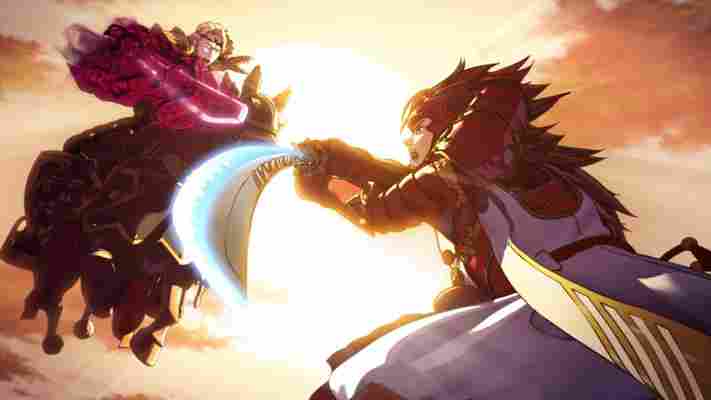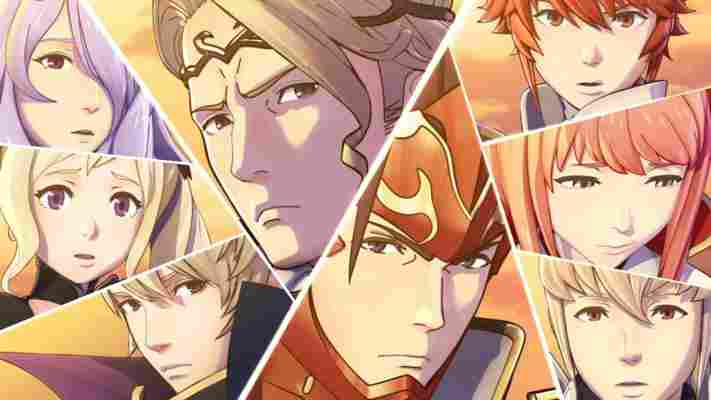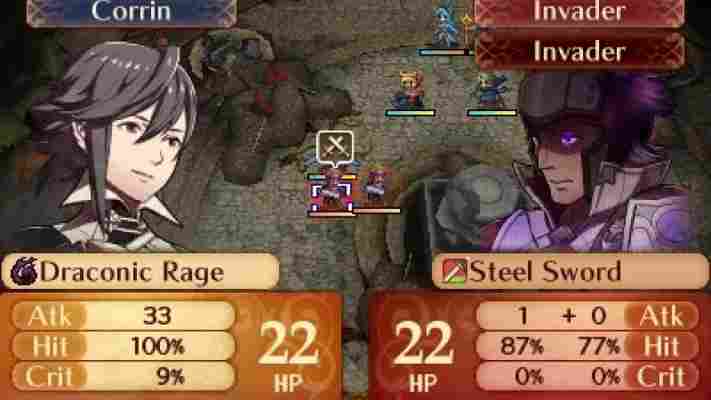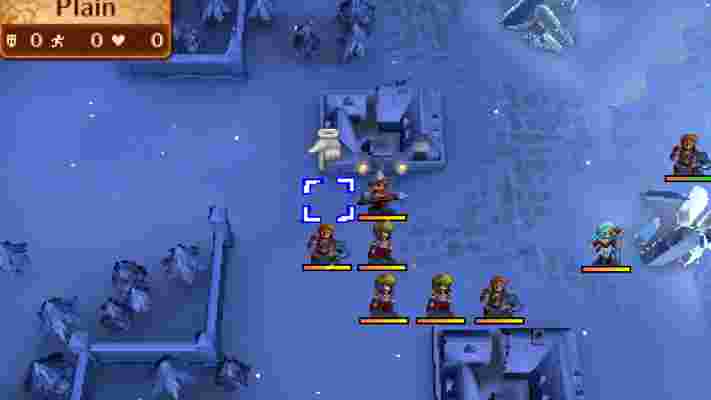Decisions, decisions. They're the lifeblood of all good strategy games, but there's one particular choice in Fire Emblem Fates that's arguably more important than any other decision you'll make in the entire game.

Do you side with the good, noble Hoshido clan – your blood family by birth – or do you reject your familial bonds to stay with your adopted brethren in the kingdom of Nohr, a sworn enemy of Hoshido and the seat of a mad, evil king?
View latest GAME discount codes
In a way, the answer is simple, as the game does its absolute best to present the Japanese-inspired Hoshido family as the only right and honourable choice. The Western-rooted Nohr might have raised you as one of their own for most of your life, but in the space of two hours you quickly find out that they also kidnapped you as a child, tried to have you murdered and that they clearly have a deluded and bloodthirsty dictator sitting on the throne. It's a situation that's about as black and white as they come, and your Nohr siblings don't exactly bring much nuance to the situation, either, as the limited amount of screen time you spend with them before that aforementioned 'big decision' doesn't exactly make it easy to form a lasting attachment to their way of life.

And yet, you don't really get to make a choice at all, as most people will already have bought into one family or the other before they even turn on the game. For this year, Fire Emblem Fates is split into two distinct titles – Fire Emblem Fates: Birthright and Fire Emblem Fates: Conquest. In the former, you'll automatically side with the Hoshido family, while Conquest sees you making the positively backward decision of sticking with your Nohrian relatives. It's a similar idea to the Pokemon series, but unlike Pokemon X or Y, or Omega Ruby and Alpha Sapphire , Fire Emblem Fates isn't simply the same game with a handful of different characters, as both instalments are drastically different in tone and overall difficulty.
Those who buy the game digitally through the Nintendo eShop will, in fact, be able to choose one way or the other, but either way, I can't help but feel like Intelligent Systems could have made more of this big, fate-altering moment. As it stands, the whole scenario feels terribly under-cooked and it's so lacking in moral complexity that it almost feels rather arbitrary, as if you're simply making a decision about whether you like the idea of riding around a Pegasus and firing shurikens for the rest of the game, or fancy mastering the art of wyvern riding and magic spells.
Yet, judging Fire Emblem Fates solely on the strength of that one moment would be incredibly short-sighted, as Intelligent Systems has once again delivered a first-in-class strategy game that's more ruthless and more ambitious than any other game in the series. As with the excellent Fire Emblem Awakening (also on 3DS), the basic setup boils down to moving your warriors round a board of tiled squares, bringing them in range of your enemies and letting their attacks fly in dramatic, 3D battle sequences.
Birthright is probably the best place to start for Fire Emblem newcomers, as this version bears the greatest resemblance to Awakening and has simpler objectives and an easier, more relaxed levelling system. This is thanks to Birthright's Scout feature, which lets you seek out endless extra battles at the expense of some gold. You can send out these scouts after each big chapter encounter, and emerging victorious from these small skirmishes will earn you more items and experience points, and hasten the bonds between your warriors.

Improving character relationships is particularly important in Fates, as Fire Emblem's intricate support systems play an even greater role here than they did in Awakening. By pairing them up or having them stand next to each other in battle, certain characters can give each other stat boosts once they reach a certain support rank. When two characters achieve S rank support, they can also get married and (by some strange act of time-bending magic) produce children that will eventually fight alongside you later on. Each child's stats also depend on who their parents are, so getting each character to the required support rank is almost an entire sub-game in itself.
Conquest, on the other hand, forces players to make do without these additional challenge battles, so you'll need to get by on less gold and fewer experience points. It also has more bespoke victory conditions than Birthright, such as defeating a set number of characters or defending a particular area on the map for a certain number of turns.

Even when you don't have specific objectives to accomplish, though, Fates makes great use of its various environments, making them as big a part of your overall strategy as your individual warriors. Members of each side's royal family, for instance (your avatar included) can activate certain tiles called Dragon Veins, which can deal additional long-range damage or alter the landscape and make it easier (or more difficult) to progress.
The landscape veins can be a real lifesaver if you're fleeing from a hoard of oncoming enemies, but activate them at the wrong time and you might find you've destroyed a valuable bottleneck that lets you stem the tide of multiple attacks. The maps themselves are more varied, too, as Birthright has a particularly memorable set of battles on a series of gondolas and a dense, trap-ridden forest, while Conquest sees you dash through ice villages and defend a barricaded pier where enemies are attacking from multiple angles.
However, even those who consider themselves series veterans will still find themselves tested in Birthright, as this so-called 'easy' option isn't afraid to show its teeth when you finally make a mistake. Of course, the depth of those bite marks will largely depend on whether you opt for Fates' casual difficulty mode, where downed soldiers leave a sharp, but temporary wound as they go on to heal over time, or Fire Emblem's classic, yet devastating permadeath option, where fallen soldiers disappear for good and feel more akin to losing an entire limb.
Awakening had this feature, too, of course, but it also let you pair up characters to boost the lead warrior's stats in battle, aid them in attacking, and occasionally take a hit for them or block attacks entirely when defending. This helped shield secondary characters from the fray, making it easier to keep weaker characters in play.
In Fates, however, paired up characters can only offer support in the form of stat buffs. To add a second attack, they must be standing next to them instead, thereby putting them in greater danger and making them more susceptible to enemy fire. It's a small tweak, but this greater emphasis on each individual unit fundamentally changes the way you approach each battle, and it stops you from simply falling back on using the same old tactics and pair combos time and time again.
It also makes losing characters even more painful than before, and there have been several moments when I've discarded hours-worth of progress in both Birthright and Conquest just to avoid losing my best and most beloved warriors. It's not easy hitting the Home button and starting from scratch when you're 50 minutes into a single battle, but over time you'll find some characters are just too valuable to lose.
In a way, it's decisions like this that highlight just how flimsy Fates' central idea of picking a family really is. Deciding whether to restart or bite the bullet and accept your loss carries real weight in a game like Fire Emblem, but roughly an hour in each family's company just isn't long enough to make a proper investment in either set of relatives.
Still, ultimately it doesn't really matter which side you choose, as both games are truly excellent in their own right and you can always pick up the other side of the story for a discounted price of £18 once you've completed your initial arc instead of paying full price for the other cartridge. Intelligent Systems has really outdone itself with Fire Emblem Fates, and it's incredibly impressive how it's managed to create two such different games at the same time that are so rich in depth and detail. Both are absolute must-buys for all 3DS owners and collectively they win a very deserved Best Buy award.
Buy Now from Amazon
| Availability | |
|---|---|
| Available formats | Nintendo 3DS |
| Buying Information | |
| Price including VAT | £35 |
| Details | www.nintendo.co.uk |
